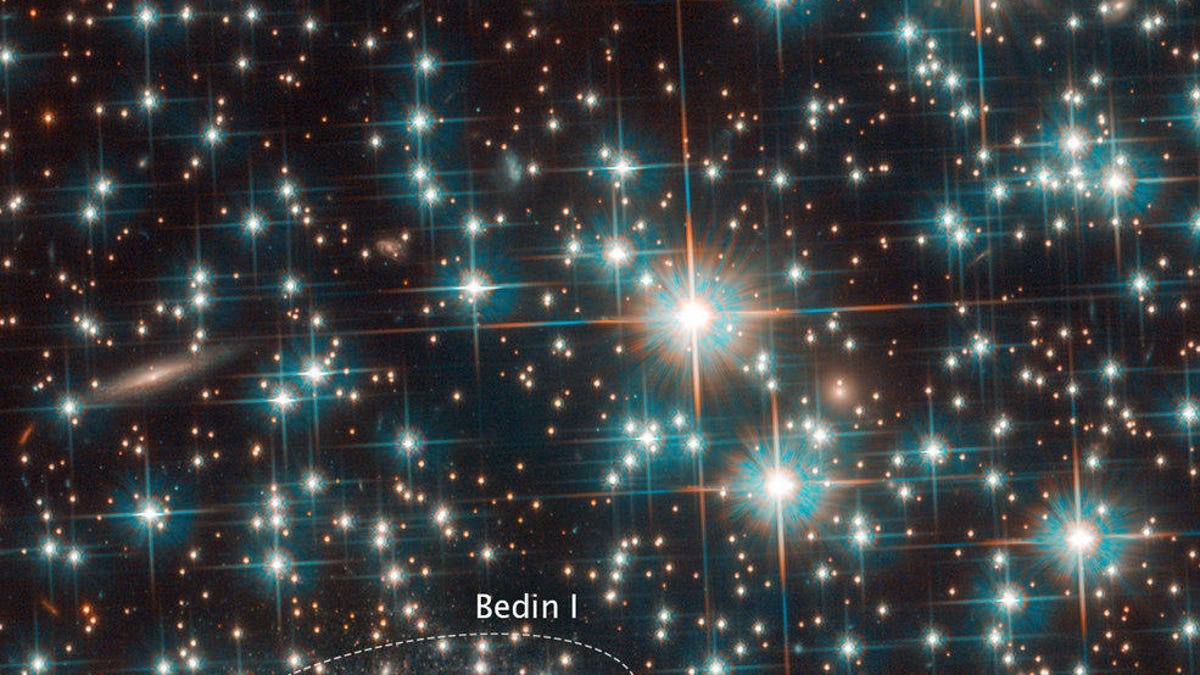NASA's Hubble telescope finds a surprise neighbor galaxy hiding out
Oh hello, Bedin 1. We didn't see you sneaking around back there.
Imagine you have a neighbor living down the block in a house you never noticed before because it was tucked in behind some apartments. The human residents of the Milky Way galaxy are now saying hi to a neighboring galaxy we didn't even know existed.
A team of astronomers serendipitously discovered the galaxy, nicknamed Bedin 1, while studying a globular star cluster known as NGC 6752.
"In a celestial game of 'Where's Waldo?' Hubble's sharp vision uncovered a never-before-seen dwarf galaxy located far behind the cluster's crowded stellar population," NASA said on Thursday.
NASA says the dim galaxy is in our "cosmic backyard" at just 30 million light-years away. Bedin 1 is a fraction of the size of the Milky Way and is classified as a dwarf spheroidal galaxy.
Astronomers estimate Bedin 1's age at about 13 billion years and say it's been isolated from interactions with other galaxies. NASA likens it to the "astronomical equivalent of a living fossil from the early universe."
The Hubble discovery was a delightful accident.
"Very few Hubble images allow such faint objects to be seen, and they cover only a small area of the sky," said the European Space Agency.
The Hubble Space Telescope is a joint project between NASA and ESA. The researchers published their findings in the journal Monthly Notices of the Royal Astronomical Society: Letters.


